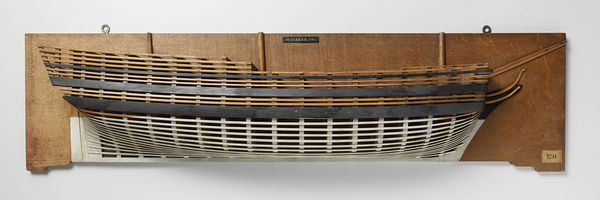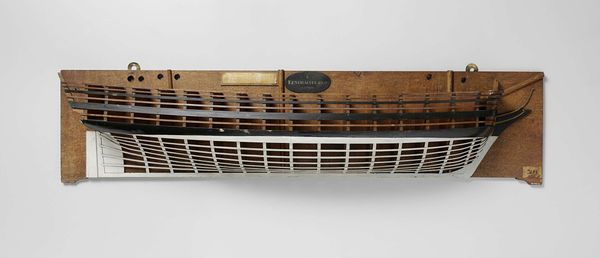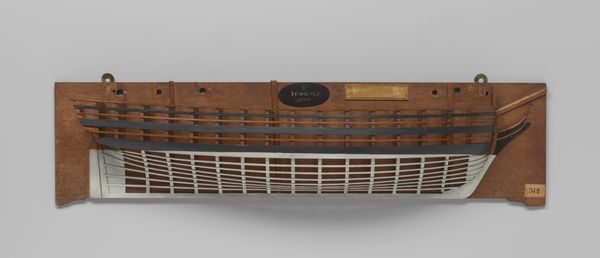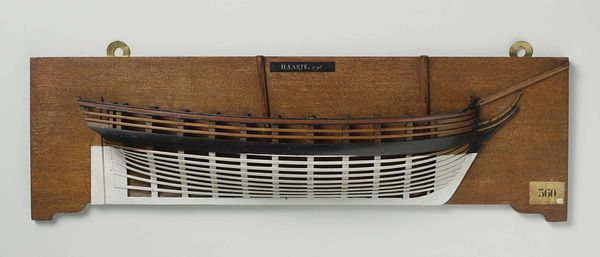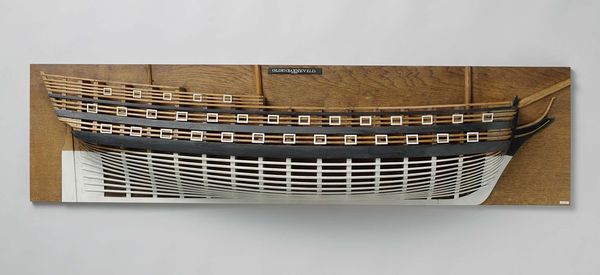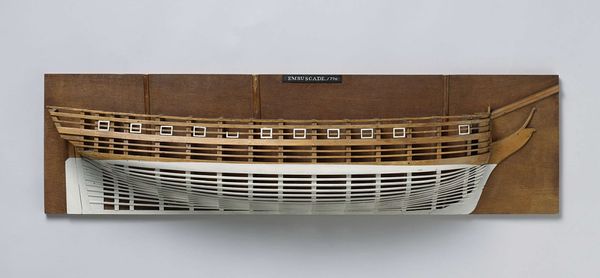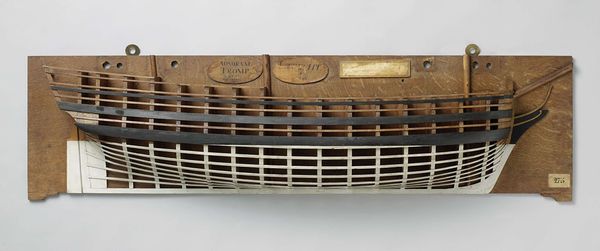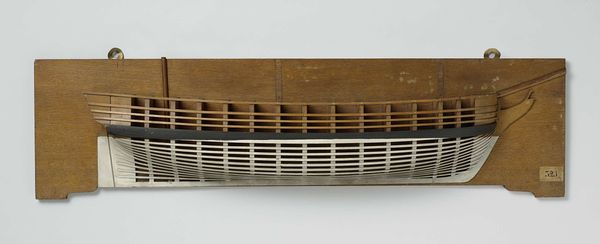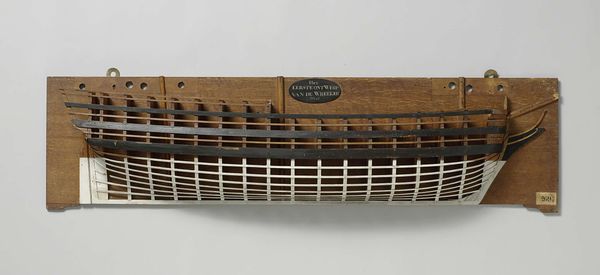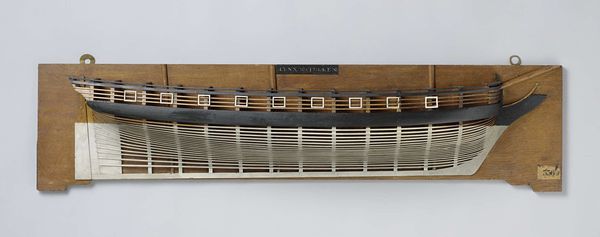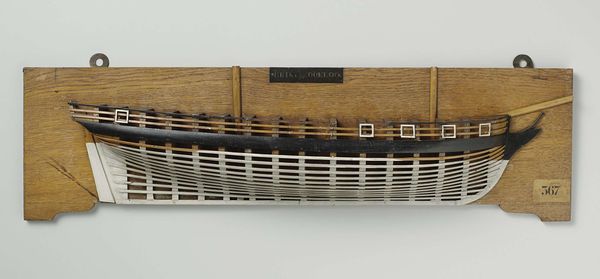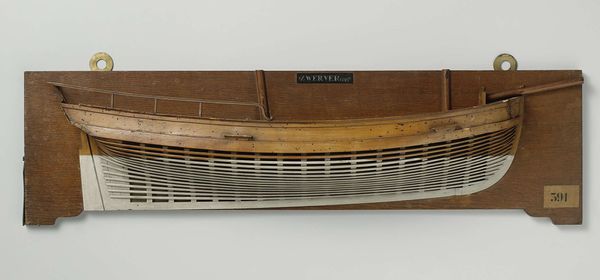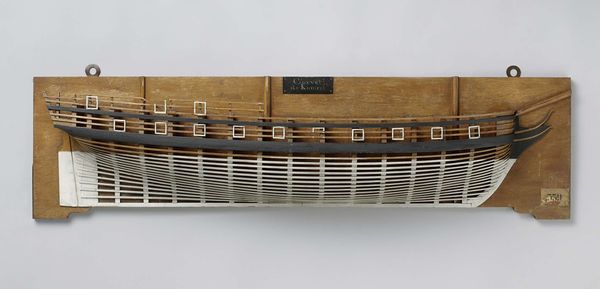
Dimensions: height 28 cm, width 96.8 cm, depth 11.8 cm
Copyright: Rijks Museum: Open Domain
Curator: Here we have a fascinating object: an anonymous "Half Model of a 36-Gun Frigate" from around 1789, expertly carved from wood. Editor: It's incredibly elegant, almost like an architectural drawing rendered in three dimensions. The contrasting dark and light wood gives it such depth, highlighting its skeletal structure. Curator: Indeed. These models served a vital function beyond aesthetics. Before the age of computer-aided design, shipbuilders used half models like this to visualize and refine hull designs. The process of its construction is inextricably linked to its functionality as a material object and maritime technology of its era. Editor: So it was a working tool, a blueprint translated into physical form. It's interesting to consider this in relation to maritime labor. Were these models crafted by the same artisans who worked on the actual ships? What kinds of negotiations and processes shaped its final form? Curator: Possibly. Understanding shipbuilding at the time reveals a complex network of laborers and craftsmen. Furthermore, consider the colonial implications; these frigates were instruments of trade, and inevitably, of imperial control. Editor: It embodies so many narratives, from technical craftsmanship and the lives of skilled laborers to the violence connected to these vessels during that era. We could connect it to a longer trajectory of material consumption associated with shipbuilding—the vast deforestation, labor exploitation—all shaping this object in tangible ways. Curator: Absolutely, it's not merely an isolated artwork. We must look at how it participated in a historical tapestry that involved exploitation and exchange of materials, as well as subjugation of distant peoples. Editor: Thinking about all those involved in its production makes me view it not just as art, but a testament to collective human efforts. Its smooth lines belie a brutal globalized network. Curator: This seemingly decorative model becomes a reminder of the entwined history of maritime technology, colonialism, and the human costs associated with material production. Editor: Precisely! This perspective prompts us to investigate both beauty and brutality present in this deceptively lovely object.
Comments
No comments
Be the first to comment and join the conversation on the ultimate creative platform.
